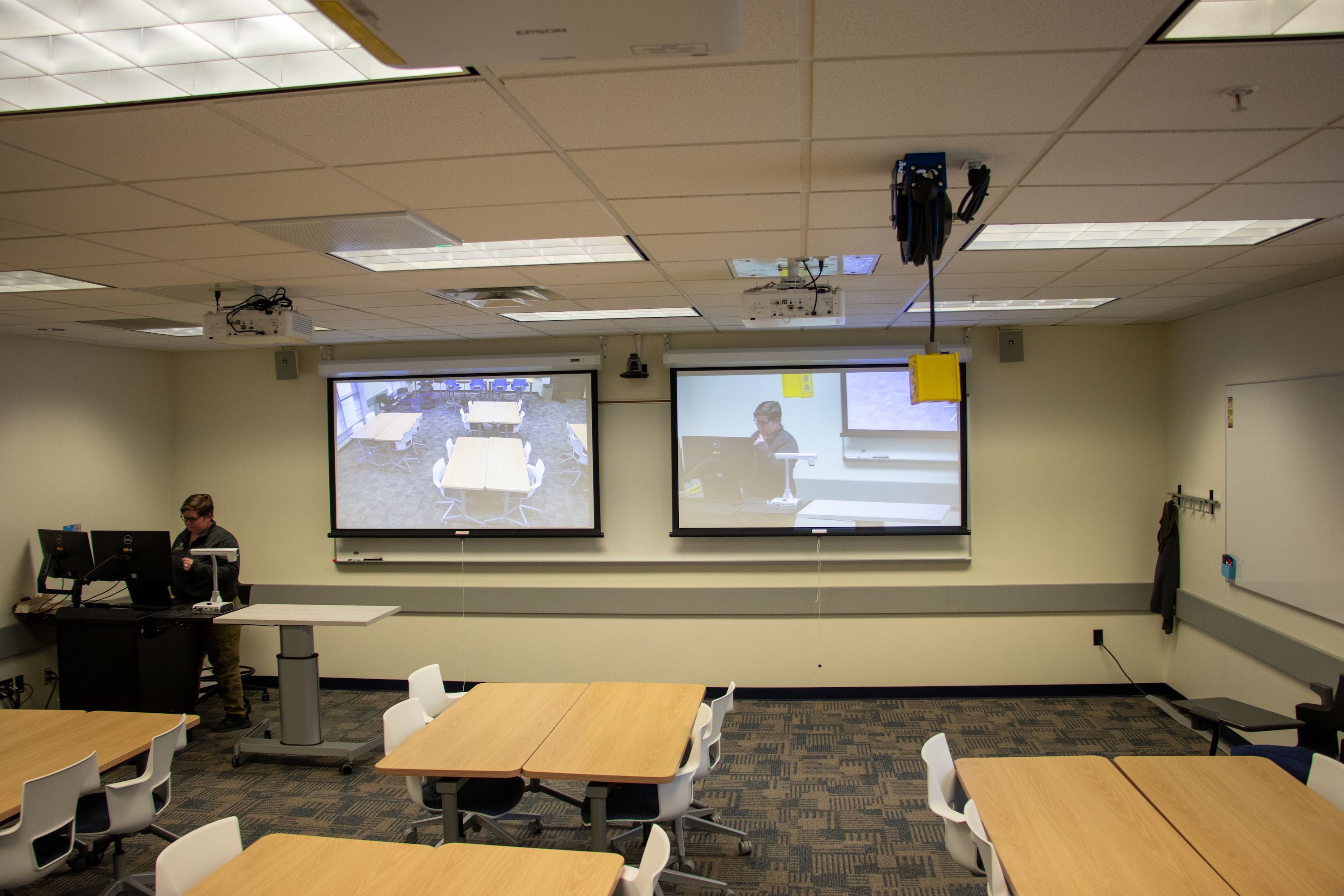GOALS
Grand Valley State University: Through our Digital Transformation Strategy, our division will collaborate to enhance and extend GVSU’s academic, research, and collegiate experience through new opportunities, modern services, innovative approaches, and supporting technologies. One of our three areas of focus is accelerating transformation through innovation. That transformation includes establishing the next-generation classroom. The goal was to create pilot active learning classrooms with flexible furniture and advanced technologies supporting remote learning.

CHALLENGES
The biggest obstacle was procurement of equipment. The ongoing pandemic has had a major impact on the supply chain for AV components. I had to make a few modifications to the design simply based on what equipment I could get at the time. The challenge was maintaining the designed functionality. The relationships I have between integrators and manufacturers were important. I was able to substitute demo components until my order was filled. In higher education, timelines are critical. Our classrooms are heavily used during fall and winter semesters, so we have a limited amount of time to complete projects.
Designing an AV system that can provide equitable remote learning is a challenge in itself. Students connecting remotely need to see and hear what’s going on in the space; and we need to provide video and audio communication not only between faculty and students connecting remotely, but student to student as well. With two-way communication, active echo cancellation (AEC) is critical. Because the classrooms were piloting new technology, I wanted to design them to be easily scalable and maintainable. I therefore chose hardware that didn’t require advanced audio digital signal processor (DSP) programming.
Additionally, the new furniture in the classroom is portable and can be configured and arranged for different teaching styles, so the technology had to be flexible as well. And so it’s important to have auto-tracking cameras as well as manual PTZ control, and an auto-switching microphone array.
USER BENEFITS
I wanted the system to be as easy to use as possible and require minimal work from our faculty. There is little time at the beginning of class for faculty to prepare, and they should be focused on instruction and not technology. And so with our upgraded system, when a faculty member walks into the room, the microphone is already on and working, and the auto-tracking camera sets the shot without any user interaction; that includes removing unused playback and recording devices in Windows so the correct camera and microphone are selected automatically and require no additional Zoom or other unified communication platform setting changes.
Each projector can be turned off and routed individually to meet the specific needs of each faculty member, and allows use of whiteboards behind projector screens. I utilized both display outputs from the PC so faculty can use an extended desktop to increase screen real estate, which is important when using Zoom and other software.
THE AV/IT TEAM
Audrey Reenders-Arens, electronic services engineer
COMPLETED: October 2021
TECH SNAPSHOT
- 1Beyond AutoTracker 3
- 1Beyond PTZ IP-20, document camera
- Epson PowerLite L400U
- Extron Matrix switcher/processor combination, 7-inch touch panel with BYOD connections
- Extron MediaPort USB bridge,
- Extron 8-inch 180W ceiling speakers
- Shure MXA910 microphone array
- Shure ANI22 Dante audio network interface
MORE BEST IN CLASS OF 2022
Best in Class of 2022: Grand Valley State University
Best in Class of 2022: Indiana University
Best in Class of 2022: Iowa State University
Best in Class of 2022: Pepperdine University
Best in Class of 2022: University of Guelph
Best in Class of 2022: University of Massachusetts Lowell
Best in Class of 2022: University of Nevada, Las Vegas
Best in Class of 2022: University of North Carolina Wilmington
Best in Class of 2022: University of Southern California

